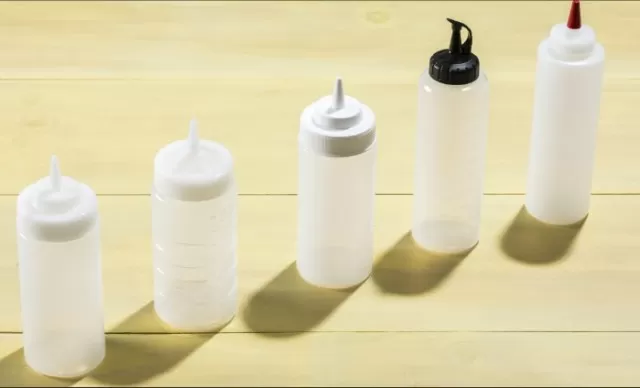Microwave No-Nos: Things You Should Never Put Inside. In our fast-paced, 24/7 culture, the microwave has become a true ally for busy households and time-conscious cooks.
With its speed and convenience, this ubiquitous appliance offers a quick solution to our daily culinary needs. However, it is important to exercise caution and be aware that there are certain items that should never find their way into the microwave. From potential messes and cleanup hassles to health and safety hazards, some materials and foods simply don’t belong in this cooking device. While there is a multitude of items to avoid microwaving, the following list highlights some of the most common offenders. Remember, when in doubt, keep it out!
The Dangers of Using Aluminum Foil in a Microwave: A Recipe for Disaster

By now, it should be common knowledge that introducing metal into a microwave is an absolute taboo! Most microwaves feature metallic linings, effectively acting as reflective surfaces that bounce microwaves within the cavity until they are absorbed by the food.
This phenomenon is highly beneficial for efficiently heating your meals. However, when it comes to metal, unlike your delectable leftovers, it possesses an inherent ability to conduct electricity.
Instead of absorbing heat, it deflects it, presenting a significant predicament when placed in a microwave.
The consequences of placing even a small piece of metal in your microwave range from mildly inconvenient to potentially catastrophic.
In the mildest scenario, the presence of metal impedes the proper cooking of your food, resulting in unevenly heated or cold spots within the dish. However, in the worst-case scenario, the release of intense heat can lead to the creation of sparks, a veritable recipe for disaster.
These sparks have the potential to ignite a fire within the confines of your microwave, causing extensive damage and rendering it unusable.
It is crucial to heed this warning and never entertain the notion of utilizing aluminum foil or any other metallic objects inside your microwave.
Doing so puts your safety at risk, jeopardizes the integrity of your microwave, and could even lead to a full-blown emergency situation. Remember, when it comes to metal in the microwave, prevention is undoubtedly the best course of action.
Preserving the Elegance: Handling Fine China with Delicate Metallic Accents
When it comes to fine china, elegance and beauty go hand in hand.
However, this delicate tableware has no place inside the confines of a microwave, particularly if it boasts exquisite metal accents such as platinum or gold bands. It’s essential to remember that these alluring metallic trims are, in fact, made of metal. Microwaving such materials can have dire consequences, including sparks, potential fire hazards, and irreversible damage to your cherished dinnerware. .
Before hastily placing your cups and plates in the microwave, it’s vital to check for a crucial message on the bottom of each piece, indicating that it is explicitly labeled as microwave-safe.
If your dish lacks this clear indication, it’s best to set it aside and opt for a glass or ceramic container that is capable of withstanding the heat generated by microwave cooking.
Preserving the elegance and integrity of your fine china is of utmost importance.
By being mindful of the potential risks posed by metal accents in the microwave and adhering to the recommended precautions, you can ensure that your cherished dinnerware remains unharmed and continues to grace your table with its timeless allure.
Reviving Crystallized Honey: Caution with Squeeze Bottles

Discovering crystallized honey in your cold kitchen cupboard can be intriguing, almost like stumbling upon a scientific experiment.
However, if your intention is to enjoy the sweet and squeezable delight, it can quickly turn into a disappointment. While a brief stint in the microwave can restore crystallized honey to its liquid form, it is important to note that attempting this method with honey still inside a squeeze bottle is highly ill-advised.
Most condiment containers, including squeeze bottles for honey, hot fudge, and mustard, are not designed to withstand microwave heat. The soft plastic material from which these bottles are typically made can melt, explode, or even ignite.
If you wish to microwave crystallized honey, it is recommended to scoop a small amount into a microwave-safe container before heating it.
This precaution ensures the safety of both the honey and your microwave. Alternatively, if you prefer to warm the entire bottle, a safer approach is to immerse it in boiling water for a few seconds at a time.
By gradually exposing the bottle to the heat of the water, you can gently encourage the honey to liquefy without risking damage or hazards.
When dealing with crystallized honey, exercise caution and prioritize safety.
Whether you choose to transfer a portion to a microwave-safe container or opt for the hot water method, taking these extra steps ensures that your sweet treat can be enjoyed without any unwanted mishaps.
Preserving the Nourishment: Handling Breast Milk Safely
In the lives of busy new moms and working mothers, the practice of freezing and thawing breast milk has become a convenient solution.
When done correctly, this method is considered safe (consult your doctor for specific guidelines). However, one practice that should be avoided is microwaving frozen breast milk. Microwaves have a tendency to heat liquids unevenly, leading to the formation of “hot spots” in the milk that can potentially scald the baby. Furthermore, some studies have indicated that microwaving breast milk can result in the destruction of immune-boosting proteins.
To ensure the safety and nutritional integrity of breast milk, it is recommended to follow alternative heating methods.
The FDA advises heating breast milk or formula by placing the container under hot running tap water or in a pan of hot water that has been removed from the stove burner. Before feeding, be sure to shake the bottle gently and test the temperature of the milk on the back of your hand to ensure it is not too hot for the baby to consume.
By adhering to these recommended guidelines, you can safely preserve the valuable nutrients in breast milk while protecting your little one from potential harm.
Prioritizing the correct heating methods and temperature testing ensures that your baby receives the nourishment they need without compromising their well-being.
The Perils of Microwaving Eggs: Stick to the Stovetop for a Safe and Delicious Experience

In the world of kitchen gadgets, it’s easy to come across numerous products claiming to cook eggs safely and effortlessly in the microwave.
However, it would be wise not to fall for these enticing offers. Regardless of the gadget du jour you may encounter, microwaving eggs is a surefire way to create a messy situation.
The intense and rapid heat produced by microwaves causes steam to build up inside the egg, often leading to explosive results. Trust us, dealing with egg yolk splattered all over the interior of your microwave is not a pleasant task.
Even worse, having an egg explode on your plate, or worse yet, in your mouth when taking a bite, is an experience best avoided.
If you’re seeking a warm and delightful egg experience, it is highly recommended to stick to the traditional stovetop cooking method.
By using a pan and controlled heat, you can ensure that your eggs are cooked to perfection without any risk of unwanted explosions or messy cleanups.
Remember, when it comes to cooking eggs, the stovetop is your ally.
By opting for this tried and true method, you can enjoy a safe and delicious egg preparation without the microwave-induced hazards.
*The information is for reference only.